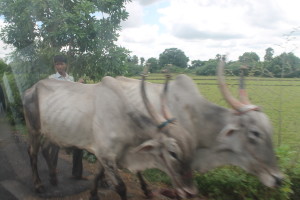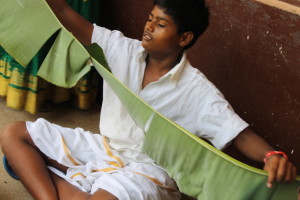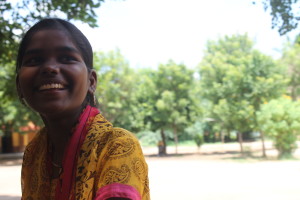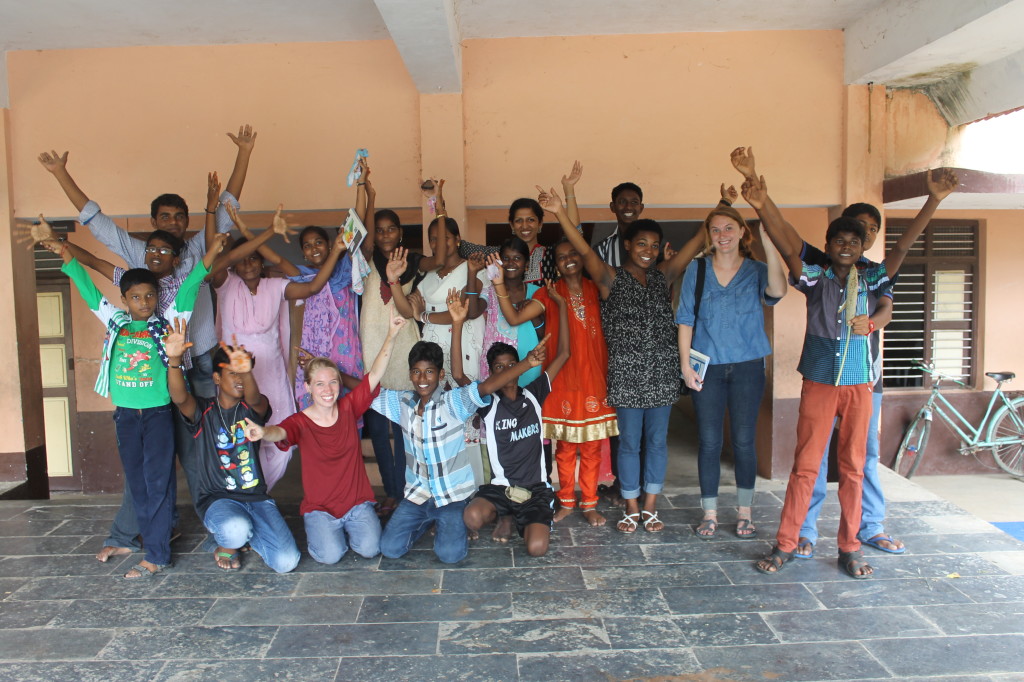Anilady: Our Town
Heading to Anilady was like driving into a dream: while sounds of soothing Tamil pop played over the car stereo, we drove past acres of palm trees, rice paddies, peanut farms, and quietly grazing cows. 40 minutes into this drive into rural Tamil Nadu we arrived at Sacred Heart School– a massive yellow cathedral in the midst of one story houses and palm frond-roof stables.
We were in Anilady in early October through a partnership with Communities Rising, an organization that brings after school programs to rural villages in Tamil Nadu and one TMS has worked with for several years. We didn’t know exactly what to expect aside from that the students spoke Tamil and were coming in over their school break to learn about movie making. Videos in the past have ranged from music videos to features on cleanliness. Regardless, the drive made one thing clear: we were not in Hyderabad anymore.
And these were certainly not Hyderabad students. Though they shared common traits of being very enthusiastic about getting their hands on the camera, making up stories, and showing off their dance, mehendi, and biking skills to us, their skill levels were different from students we have in the city. The students had previously been trained on computers through CR and had extra time after school to play around with programs like Photoshop, so the simpler tasks that have become a headache to teach at Hyderabad’s schools (like clicking and dragging, creating a folder, right clicking, saving) were something we could pass right over. It was clear that the extra help and individual attention they received at these schools was key to them getting to the next level of working with cameras and video editing. But their English skills were not as advanced as our Hyderabad students, likely because there were not as many opportunities to practice. But that being said, we had incredible support from the CR and Sacred Heart staff (and extended group of friends). Nelson, Agni, Siva, Mario, and Seenu were absolutely crucial to making this project work. They translated and joked around with the students to make them feel more comfortable with the new subject matter and teachers. I think this was a major contribution to our final project– you quickly see how willing the students were to be open about tough subjects and welcome us into their village home.
After a day of brainstorming we came up with four things that the students noticed about their village. First, they loved the food
and festivals. Dosas, peanuts, and (the festival) Pongal were all brought up right away. But they also knew there were things in the village they wanted to improve, like alcohol abuse which has affected families, and power cuts which have affected farming and other industries. With this nuanced look at their community, we decided to tackle all four issues over the next week.
The week was a whirlwind of filming around the entire village. Rachel’s group, which worked on food, ventured to peanut fields and showed how to make a homemade dosa. Dara’s group followed the effect of power cuts from the home to the farm to the local spice factory. Nandini’s group recreated the Pongal celebration (which included bringing a cow on school grounds). My group
created a fiction film about a man who is an alcoholic, but changes and becomes a better father, husband, and worker. While in Hyderabad we are mainly confined to school grounds, here we could make the whole village our movie set, and due to that you can really get a feel of what life is like in Anilady.
Overall, we had so much fun with the Anilady students and were very pleased with the movie they filmed and edited. A huge thanks to the Communities Rising organization for making this happen. It was easily one of the most memorable weeks of our fellowship.
Stay tuned for the video from our other school, Vikravandi!






